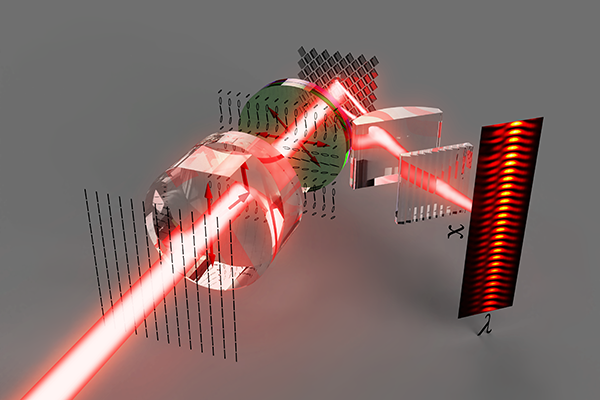All light sources, natural or man-made, are more or less partially polarized and partially coherent. The extreme cases of fully coherent, fully polarized beams and completely incoherent, unpolarized sources are good approximations, e.g., for single-mode lasers and thermal radiators, respectively. However, several light sources that fall in between these two extremes exist, as exemplified by multimode lasers and LEDs. While the scalar-field treatment is sufficient for uniformly fully polarized field, partial polarization adds a new dimension and the complete coherence characterization necessitates the use of electromagnetic coherence theory and development of methods to measure the related important parameters. The information pertaining to the coherence of vectorial, partially polarized optical beams is conveniently expressed in terms of the two-point (coherence) Stokes parameters introduced relatively recently.
The device introduced by Dr. Henri Partanen from a research group from the University of Eastern Finland in Photonics Research, Volume 7, Issue 6, 2019 (H. Partanen, et al., Spectral measurement of coherence Stokes parameters of random broadband light beams) is a general-purpose device to measure the spectral two-point Stokes parameters of arbitrary broadband light beams. To demonstrate the system a well-defined test source with complicated electromagnetic coherence properties is constructed. This is achieved by modulating a uniformly linearly polarized, spatially partially coherent light from a superluminescent diode with a quartz wedge depolarizer leading to a beam with spatially and spectrally varying electromagnetic coherence structure. In order to verify the beam characteristics experimentally we measure the spectral electromagnetic two-point Stokes-parameter distributions, which is achieved in terms of standard, commonly available devices: a double-pinhole interferometer (digital micromirror device), suitable polarization elements (circular polarizers), and a spectrometer (grating). The setup is flexible as the individual components can be chosen for specific situations, e.g., the interferometer can be replaced with a more light-efficient wavefront folding interferometer. As a secondary result, the coherence and polarization variations as a function of wavelength were found to take place at a subnanometer scale.
Prof. Jari Turunen from the University of Eastern Finland believes that the setup is a valuable tool for characterizing novel light sources such as plasmonic lasers and metamaterial emitters. The method is simple and robust and applies to random electromagnetic beams of any spectral bandwidth and polarization state.

A quartz wedge depolarizer modifies the spectral polarization-coherence properties of the beam which are measured using a circular polarizer, digital micromirror device, and a grating. The resulting interference fringes reveal the coherence Stokes parameters as a function of wavelength.


